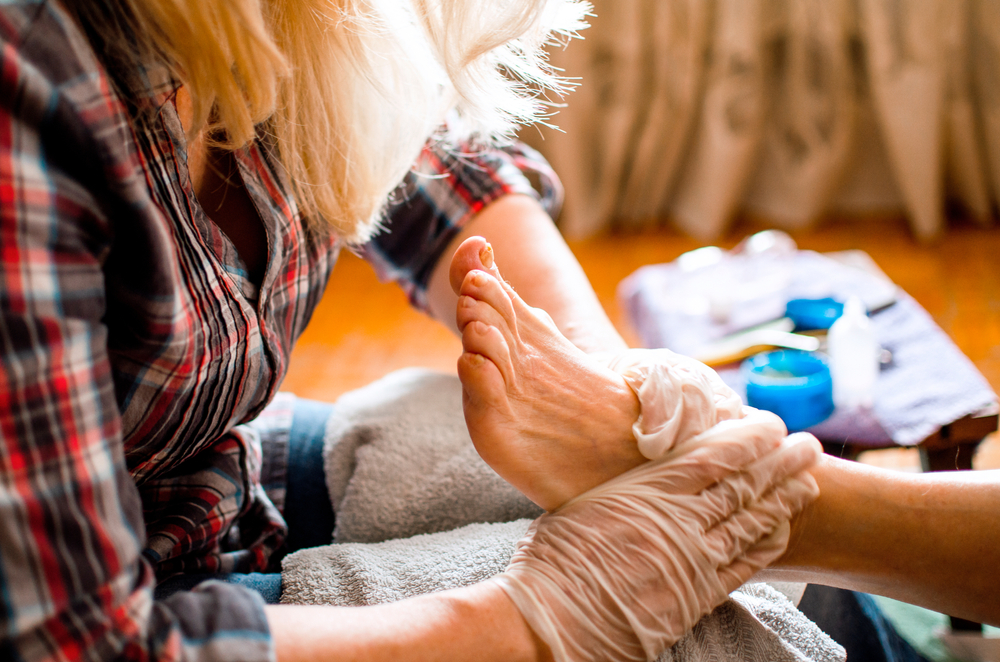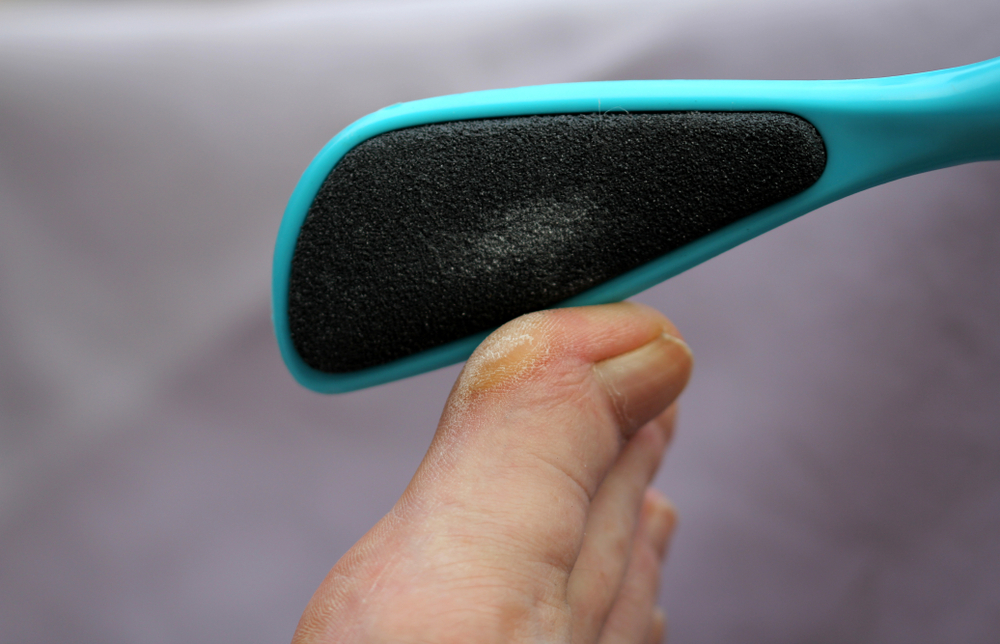Those who suffer from thick toenails might wonder what they should do to get rid of them. Fortunately, there are several treatment options available. In this article, we'll look at the causes, treatments, and prevention tips for thick toenails. You can also learn how to take proper care of your feet and prevent thick toenails from happening again. Here are some tips to keep in mind:
Treatments

Several reasons can contribute to thick toenails. Tight fitting shoes, nail trauma, and even fungal infections can cause thick toenails. If you suspect that you have a thick nail, consult a doctor and discuss lifestyle changes, medication, and surgical options. While these methods are not ideal, you can find some relief by wearing larger shoes. For more severe cases, you can also try home remedies such as soaking your feet.
Besides soaking your feet every night in a warm bath, you can also file your nails down with a nail file. The softening action of tea tree oil can help you clip your thick nails and reach the fungus underneath. You can also apply vapor rub to your toenails twice a day. If these treatments do not work, your doctor may prescribe oral medications or topical creams. In addition to topical products, a doctor may recommend laser therapy to kill the fungus.
Toenails can also be impacted by certain diseases or disorders, such as diabetes and eczema. Additionally, poor circulation to the toes can cause thick toenails. People with diabetes often have poor circulation, which can affect the health of the nail plate and cause thick toenails. If this happens, it can also lead to other health problems, such as pleural effusion or bronchiectasis.
Fungal infections are the most common cause of thick toenails. Fungal infections affect up to 10% of the population. Whether they affect the nails or the skin, they are not serious conditions. Proper treatment can ease the discomfort and even improve the appearance of the toenails. You may not experience any noticeable symptoms at first, but the infection can improve after several treatments. A podiatrist can perform a surgical procedure to remove the infected nails and return them to their normal, healthy condition.
Apart from fungal infections, psoriasis can cause thick toenails. Psoriasis affects a person's immune system, causing overproduction of skin cells. Psoriasis is not contagious. In contrast, Paronychia is caused by a bacterial infection at the base or side of the nail. If this happens, it will cause the nail to grow thicker and distorted.
Prevention is the best cure. Make sure your shoes fit properly. If they don't, your toenails can split and irritate. A warm bath can help alleviate discomfort. If you do suffer from thick toenails, try to wear proper footwear. Changing your footwear can also cause changes in your toenails. Some of these changes are caused by reduced blood flow to the toes, nail clipping habits, trauma, and improperly fitting shoes.
A variety of topical and oral medications are available for toenail fungus. Choosing a topical treatment that is safe and effective may be best for you. Taking an antifungal medication may also help you deal with your toenail fungus. Topical medications are the mainstay of therapy for toenail fungus. Applying Vicks VapoRub or tea tree oil to your toenails twice daily can also help.
Laser treatments are another effective treatment for thick toenails. These treatments do not require anesthesia and are painless. The laser light targets the infected tissues in the nail without harming healthy tissue. The laser treatments last about 30 minutes. Patients can return to normal activities afterward and can go about their daily lives afterward. The majority of patients experience a significant improvement after undergoing one session. These laser treatments have minimal side effects and are safe for all patients.
Causes

Several factors can contribute to the growth of thick toenails. For example, people with lymphodema, poor circulation, and ill-fitting shoes are at increased risk of developing thick nails. Other causes include trauma or psoriasis. While aging can contribute to thickening toenails, some treatments can help smooth them out. These treatments are also available at nail salons.
Traumatic injury to the toe can also contribute to thick toenails. Trauma to the toe can damage the nail plate, causing thick toenails. Traumatic injuries are common, especially in athletes and people who play sports that require prolonged running. In many cases, medical treatment can help thickening toenails grow back naturally. In some cases, though, the cause of thick nails is undetermined, medical treatment is often necessary.
A major injury can also cause brittle, thick toenails. Repeated trauma can lead to thick toenails. These may be mistaken for fungal infections. People who play sports or wear ill-fitting shoes are particularly at risk. Injured big toes are also prone to thick toenails. Regardless of the cause, treatment is necessary. So what are the causes of thick toenails?
Foot trauma is a common cause of thick toenails. While wearing shoes to protect your toes from injury and repeated trauma, wearing poorly-fitting shoes can also lead to thick toenails. Additionally, rubbing the toenail against your shoes can contribute to thickening. Moreover, dropping heavy objects can also lead to thick nails. Fortunately, many medical treatments for thick toenails are available.
Repeated trauma to the toe may also contribute to thick toenails. If the injury causes a nail bed to become damaged, new cells may grow underneath and lift the nail. A thicker toenail may even detach from the toe. Athletes are especially prone to toe injuries, so it's vital to wear comfortable shoes and trim them regularly. And don't forget to report any injuries to your doctor as soon as possible.
Another cause of thick toenails is fungal infections. Fungal infections usually heal on their own, but if they are not treated, the infection may spread to other parts of the body and require invasive medical intervention. Sometimes, a doctor may prescribe oral medications for toenail fungus treatment. These treatments often have serious side effects and take several months to work. Toenail fungus may require surgery or oral medications.
Another common home remedy for thick toenails is garlic. Garlic contains antifungal and antioxidant properties that may help. You can simply rub garlic oil onto thick toenails, or combine garlic oil and vinegar and leave it on the affected areas for 30 minutes. You can also eat garlic daily to reap its benefits. The more you eat garlic, the less likely you'll have to worry about fungus infecting your toenails.
If you're playing sports, try wearing proper footwear. Be careful not to wear shoes that are too loose or too tight, and never walk around barefoot. Using protective gloves and socks while playing sports is important to prevent fungus from spreading. Also, be sure to keep your feet dry, and moisturize them after washing and drying. When you do get the fungus, you may experience dry and brittle toenails, but there are many home remedies for the problem.
Proper foot hygiene is one of the best ways to keep toenails healthy and prevent further damage. If you are a diabetic, or have a condition that affects the skin, you may need to visit a dermatologist and have your toenails examined. If your nails are thick and have a hard surface, you should have them trimmed, which can relieve pain. Your doctor may recommend a treatment plan or simply clip your toenail to avoid the condition altogether.
A fungal infection in the toenail area is one of the most common causes of thick toenails. The toenail itself becomes discolored and thick, resulting in the appearance of a discolored nail. Eventually, the nail will peel off, leaving behind a brittle layer of skin. It may also cause a foul odor. Chronic paronychia may be caused by frequent dish washing or by a fungal infection.


Leave feedback about this